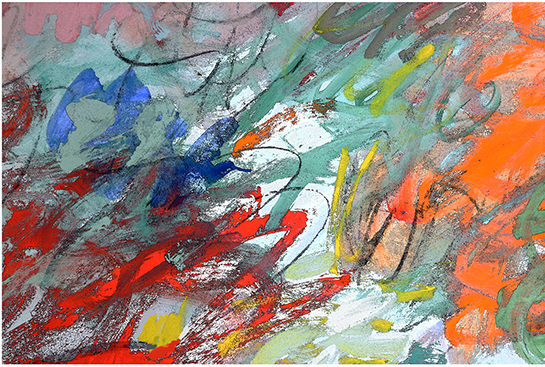11 – 29 gennaio 2016
a cura di Massimo Blanco
L’arte di Claudie Laks esplora lo spazio attraverso dei moduli gestuali (e grafici) che si mantengono costanti nella produzione pittorica dell’artista. Le sue tele accolgono un reticolo di nodi grafici che coesistono e si armonizzano determinando un equilibrio che si espande o si contrae. L’armonia dei colori appare legata al tempo della percezione del dipinto, è ancorata al presente, all’esperienza dell’osservatore. Ciò non esclude che le superfici armoniche di Laks si lascino contaminare da forze disgreganti, aprendosi così a prospettive di instabilità e di mutamento. Tali forze circolano dentro la frontalità dei reticoli. Nascoste in profondità, non mancano di affiorare, per disturbare l’armonia e avviarne la trasformazione. Cosicché l’artista mette in atto una doppia temporalità, svelando l’intervallo che separa che separa gli equilibri visibili sulla tela, nell’istante in cui è osservata, dagli squilibri futuri.
Ma la rottura dell’armonia non è soltanto un evento futuro. Si lega al linguaggio, al momento in cui il gesto grafico potrebbe convertirsi in un segno leggibile. L’oscillazione tra moduli gestuali e segni può infatti alterare il tempo dell’opera d’arte, sfasare l’immediatezza con cui essa si propone e vive, deviare la percezione dall’immediatezza del vedere alla sfera intellettuale, quella del pensiero, della memoria, delle idee e delle parole.
Claudie Laks’s works explore space through gestural (and graphic) modules that are a constant with her production. Her paintings show a lattice of graphic knots which coexist and harmonise themselves, creating a balance that both expands and contracts. The harmony of colours appears to be linked to the time of perception of the painting, it is anchored to the present, to the experience of the observer. Nonetheless, the harmonic surfaces by Laks can be contaminated by disrupting forces, thus opening up to perspectives of instability and change. Such forces circulate beneath the frontality of the lattices. Hidden in their depths, they emerge in order to ruffle the harmony again and set the change. The artist then performs a double temporality, revealing the gap between the visible balances on the canvas, the moment it is observed, and the future imbalances.
The disruption of harmony is not only an event of the future. It is linked to language, to the moment in which the graphic gesture could turn into a readable sign. The oscillation between gestural modules and signs can indeed alter the tempo of the work of art, dephasing the immediacy with which it proposes itself and lives, deviating perception from the immediacy of seeing to the intellectual sphere, the sphere of thought, of memory, of ideas and of words.
